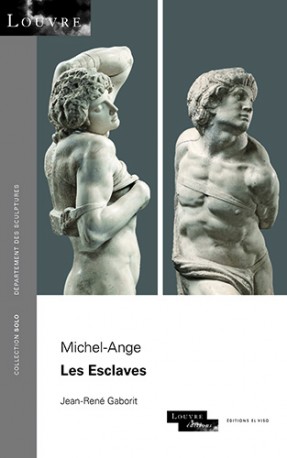
Michel-Ange. Les Esclaves
The two chained captives are opposed in all the feelings they express. One is supremely youthful and beautiful, and seems to abandon himself to perhaps-eternal sleep. He is called the dying slave. The other, more untamed, is caught in a vibrant wrestle of his whole being. He is said to be the rebellious slave. While the Louvre Slaves undoubtedly owe part of their great fame to the fact that so remarkably few of Michelangelo’s sculptures are located outside of Italy, the story of these two captives, tied to the history of the tomb of Pope Julius II, and their enigmatic meaning, have clearly contributed to the myth that elevates the Dying Slave and the Rebellious Slave to the rank of masterpiece. This volume, written by one of the greatest experts in Italian sculpture, takes us deep into sixteenth-century Rome, a century when the effervescence of artistic creation reached its pinnacle. Jean-René Gaborit, one of the great specialists in Italian sculpture, invites us to follow the genesis of this monumental project that consumed Michelangelo for close to forty years…
30 other products in the same category:
Cargando...






